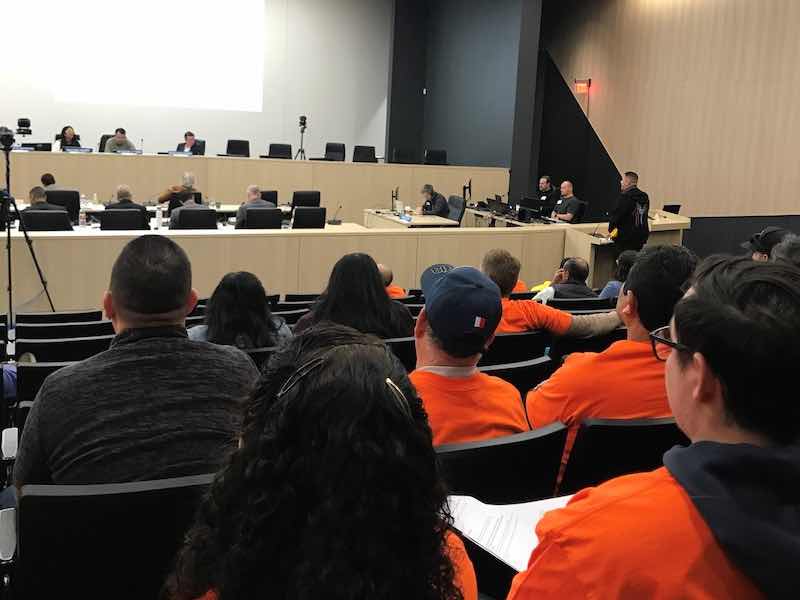The California Air Resources Board will hold a public hearing May 25 to vote on a proposed rule to phase out existing hexavalent chromium facilities over the next 10 years.
CARB held a hearing in January on the proposed rule — the Airborne Toxic Control Measure for Chromium Electroplating and Chromic Acid Anodizing Operations — that would phase out decorative plating facilities at the beginning of 2030, as long as decorative chrome plating facilities show they have complied with new building enclosure requirements to reduce fugitive emissions by 2026.
The meeting will be at 9:00 a.m. PST at the CARB headquarters in Riverside, CA.
CARB says the rules are “needed to further reduce the exposures and health impacts from hexavalent chromium emitted from chrome plating facilities (which include decorative and hard chrome plating and chromic acid anodizing facilities) in communities near these sources.”
Incorrect Data Dramatically Exaggerates Exposures
But surface finishers say the CARB staff has provided the board with incorrect data and information that dramatically exaggerated the amount of hex chrome that the finishers release and called on the CARB members to toss out the staff recommendations.
Charles Pomeroy, an attorney representing the Metal Finishing Association of Northern California, Metal Finishing Association of Southern California, and National Association of Surface Finishers, wrote to the board that the new data and a revised Table 1 show lower actual emissions than were previously analyzed, but the latest changes failed to address the record as it was previously prepared.
“Moreover, these lower values have not been evaluated and compared to the significant in crease in excess hexavalent chromium emissions that would be generated due to increased transportation resulting from the adoption of the Proposed Amendments,” Pomeroy says. “The accuracy of the Record currently is in question, particularly since there appears to be continuing errors in and problems with the latest Second Revised Inventory.”
Specifically, the MFACA says CARB’s revised hexavalent chromium emissions from 2019 are only 1.05 pounds for the entire plating industry in California and only 0.093 pounds for decorative, but the actual emissions are even lower.
Pomeroy says the MFACA would like to meet with CARB to further evaluate the proposed amendments with accurate data and appropriate criteria.
Pointing Out Incorrect Data Proving Fruitless
Bobbi Burns, president of the MFANC, says the CARB members are working from incorrect data that could put an industry out of business. She says the group has tried to point out the inaccurate data, but it has not been corrected.
“The second 15-day comment period allows comment on the minor decimal correction of the hard chrome, but the ISOR and the SRIA is still wrong,” Burns says. “Many of us in the metal finishing industry have questioned the data from the beginning. CARB has had access to data from the air districts and yet when I look at the emissions inventory I am confused. It seems like CARB is missing a lot of data, so they are making up some generic calculations, using permitted amp/hrs as the reported throughput and a generic emissions calculation just to fill a blank space. How is CARB still moving forward with a vote to ban without accurate numbers?”
Additionally, Neil Hammel from the Ventura County Air Pollution Control District pointed out a major error in how the CARB staff computed the emissions for hex chrome. Hammel says the listed surface tension of water at 25°C (72.75 dynes/cm) in now appendix 7 is actually the surface tension of water at 20°C. He says the correct surface tension of water at 25°C is 71.99 dynes/cm.
“If facilities use the surface tension calculation as presented in the ATCM, their results will be skewed higher than reality, resulting in greater emissions of hex chrome,” Hammel wrote to the CARB members.
After the January hearing, CARB directed its executive officer to determine what additional conforming modifications were necessary to provide decorative chrome plating facilities with an optional pathway that would provide more time to transition to less toxic alternative technologies. CARB staff made 15-day changes to provide decorative chrome platers with an alternative phase out pathway in order to meet Board direction.
“The alternative phase out pathway allows for three additional years prior to the phase out of hexavalent chromium at decorative plating facilities,” the CARB staff says in its meeting notice. “Facilities that choose to follow the alternative phase out pathway are also required to comply with building enclosure requirements in the interim period prior to the phase out of hexavalent chromium.”
The proposed rules still ban any new chromium electroplating and chromic acid anodizing operations starting after January 1, 2024. CARB also wants to phase out the use of hexavalent chromium in functional plating — hard plating and chromic acid anodizing— by January 1, 2039.



































